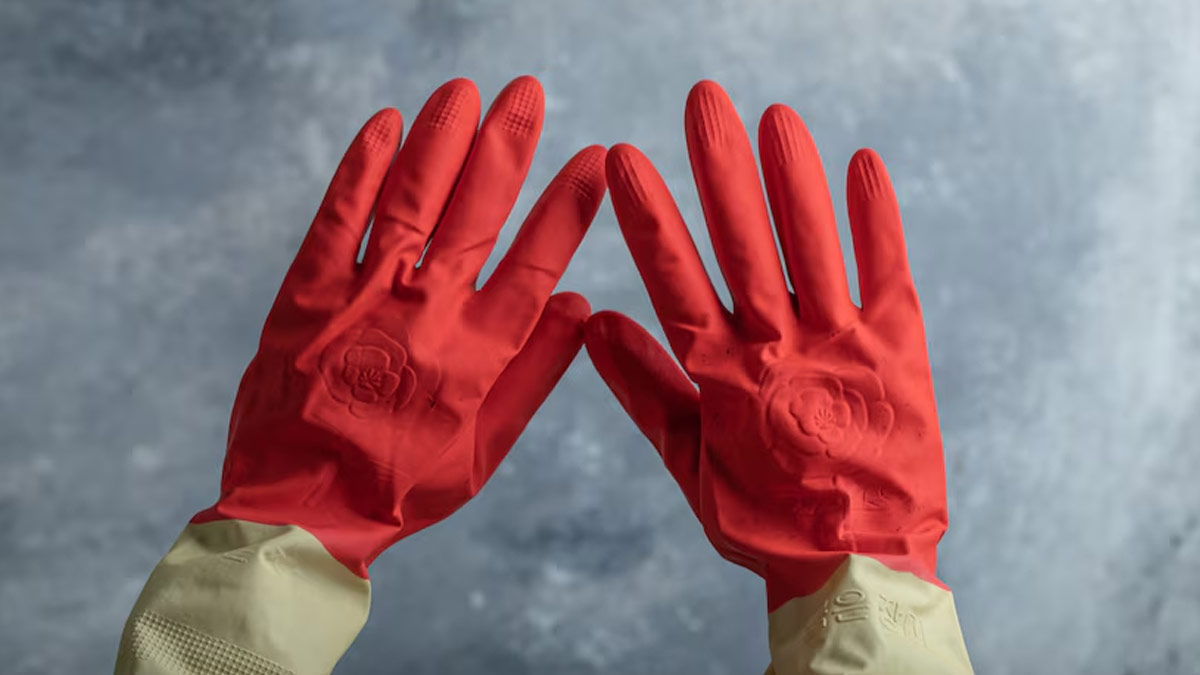
Radiation protection gloves are essential personal protective equipment (PPE) for healthcare professionals, particularly those working in environments where exposure to ionising radiation is common, such as radiology departments, surgical theatres, and nuclear medicine facilities. These gloves minimise the harmful effects of radiation on the hands, which are often the most exposed parts of the body during medical procedures involving X-rays or other radioactive materials. However, several myths and misconceptions surround their use, leading to potentially dangerous practices.
Table of Content:-
Myth #1: Radiation Protection Gloves Are Uncomfortable and Reduce Dexterity
Myth #2: Lead-Free Gloves Are Less Effective Than Leaded Gloves
Myth #3: Only Those Handling High Radiation Levels Need Gloves
Myth #4: Radiation Protection Gloves Are Not Necessary for Short Procedures
Myth #5: Gloves Don't Protect Against All Radiation Types, So They're Useless
Myth #6: Radiation Protection Gloves Are Too Expensive to Use Regularly
Myth #7: Radiation Protection Gloves Aren't Necessary If You Use Other Protective Gear
To shed light on the truth, OnlyMyHealth team interacted with Satyaki Banerjee, Group Chief Operating Officer, Trivitron Healthcare, who emphasises the critical role these gloves play in safeguarding healthcare workers:
Radiation protection gloves are a crucial component of personal protective equipment (PPE) for healthcare professionals. Despite their clear benefits, myths and misconceptions about their use persist, leading to risky practices that compromise safety.
Repeated exposure to even low levels of radiation poses significant health risks over time, affecting the hands, which are often most exposed during procedures involving X-rays or radioactive materials. Key concerns according to Banerjee include:
- Pigmentation Changes: Continuous radiation exposure can alter skin pigmentation, causing dark spots or uneven skin tone on the hands.
- Skin Burns: Without proper protection, prolonged exposure to radiation can result in painful burns that may lead to long-term damage.
- Hand Itching and Irritation: Chronic radiation exposure can cause persistent itching and irritation, making it difficult for healthcare professionals to perform their duties comfortably.
- Cancer: The most severe risk associated with unprotected radiation exposure is an increased chance of developing skin cancer over time.
Also read: What Are The Side Effects Of Radiation Therapy? Know From An Expert
These health concerns underscore the importance of radiation protection gloves in safeguarding the well-being of medical professionals. Despite clear evidence, some still believe these gloves are unnecessary or ineffective—a misconception that needs to be addressed to prevent serious health outcomes.
Let’s explore and debunk seven common myths about radiation protection gloves.
Myth #1: Radiation Protection Gloves Are Uncomfortable and Reduce Dexterity
Fact: Modern radiation protection gloves are designed with comfort and agility in mind. Banerjee said, “They are made from flexible, lightweight materials that allow for precise movements and comfortable wear over extended periods.” Innovations in glove design have significantly improved usability without compromising protection.

Myth #2: Lead-Free Gloves Are Less Effective Than Leaded Gloves
Fact: “Lead-free gloves provide radiation protection that is on par with leaded gloves. They are crafted from advanced materials that deliver equal or even superior levels of protection while being more eco-friendly and user-friendly,” Banerjee notes. Studies say that the decision to use leaded or lead-free gloves is typically influenced by operational requirements and environmental factors rather than differences in effectiveness.
Myth #3: Only Those Handling High Radiation Levels Need Gloves
Fact: Banerjee warned, “Even low levels of radiation exposure can accumulate over time, leading to significant health risks.” All healthcare professionals who work in environments with any level of radiation exposure should wear protective gloves. The cumulative effect of low-dose exposure can be just as harmful as high-dose exposure over a shorter period.
Myth #4: Radiation Protection Gloves Are Not Necessary for Short Procedures
Fact: Even brief procedures can expose healthcare workers to harmful levels of radiation. It's not just the length of exposure that matters—intensity and frequency are also critical factors. Consistently wearing radiation protection gloves during short procedures is essential to minimise the risk of long-term health problems.

Myth #5: Gloves Don't Protect Against All Radiation Types, So They're Useless
Fact: While no single material can protect against all types of radiation, radiation protection gloves are designed to shield against the most common and harmful forms encountered in medical settings, such as X-rays. Their purpose is to reduce the amount of radiation reaching the skin, thus lowering the risk of radiation-induced damage.
Myth #6: Radiation Protection Gloves Are Too Expensive to Use Regularly
Fact: The cost of radiation protection gloves is a small price to pay compared to the potential medical expenses and loss of work time associated with radiation-induced health problems. Investing in high-quality gloves is an investment in the long-term health and safety of healthcare professionals.
Myth #7: Radiation Protection Gloves Aren't Necessary If You Use Other Protective Gear
Fact: While other protective gear, such as lead aprons and thyroid shields, offer essential protection, they do not cover the hands. “Radiation protection gloves are specifically designed to protect the hands, which are often in close proximity to radiation sources during medical procedures,” Banerjee said. Using gloves in conjunction with other protective equipment provides comprehensive protection.
Conclusion
Radiation protection gloves are a fundamental part of PPE in medical settings. Despite the myths and misconceptions that persist, the facts clearly show that these gloves are crucial for preventing a range of serious health issues, from skin irritation and burns to cancer. As Satyaki Banerjee aptly puts it, “These gloves are designed to minimise the harmful effects of radiation on the hands, which are often the most exposed parts of the body during medical procedures involving X-rays or other radioactive materials.”
Understanding and addressing these misconceptions is vital for ensuring that healthcare professionals are adequately protected against radiation exposure, ultimately safeguarding their health and well-being.
Also watch this video
How we keep this article up to date:
We work with experts and keep a close eye on the latest in health and wellness. Whenever there is a new research or helpful information, we update our articles with accurate and useful advice.
Current Version